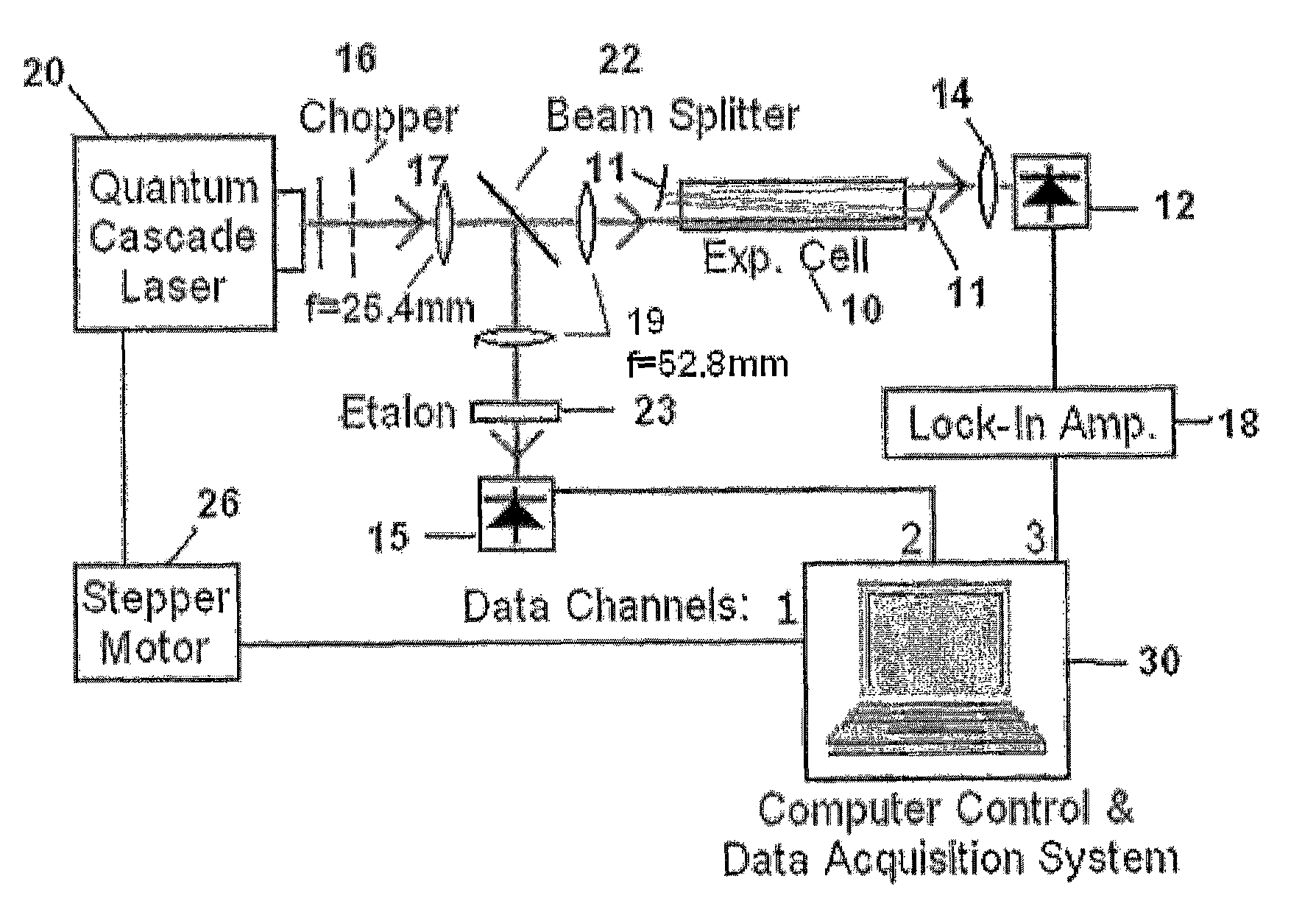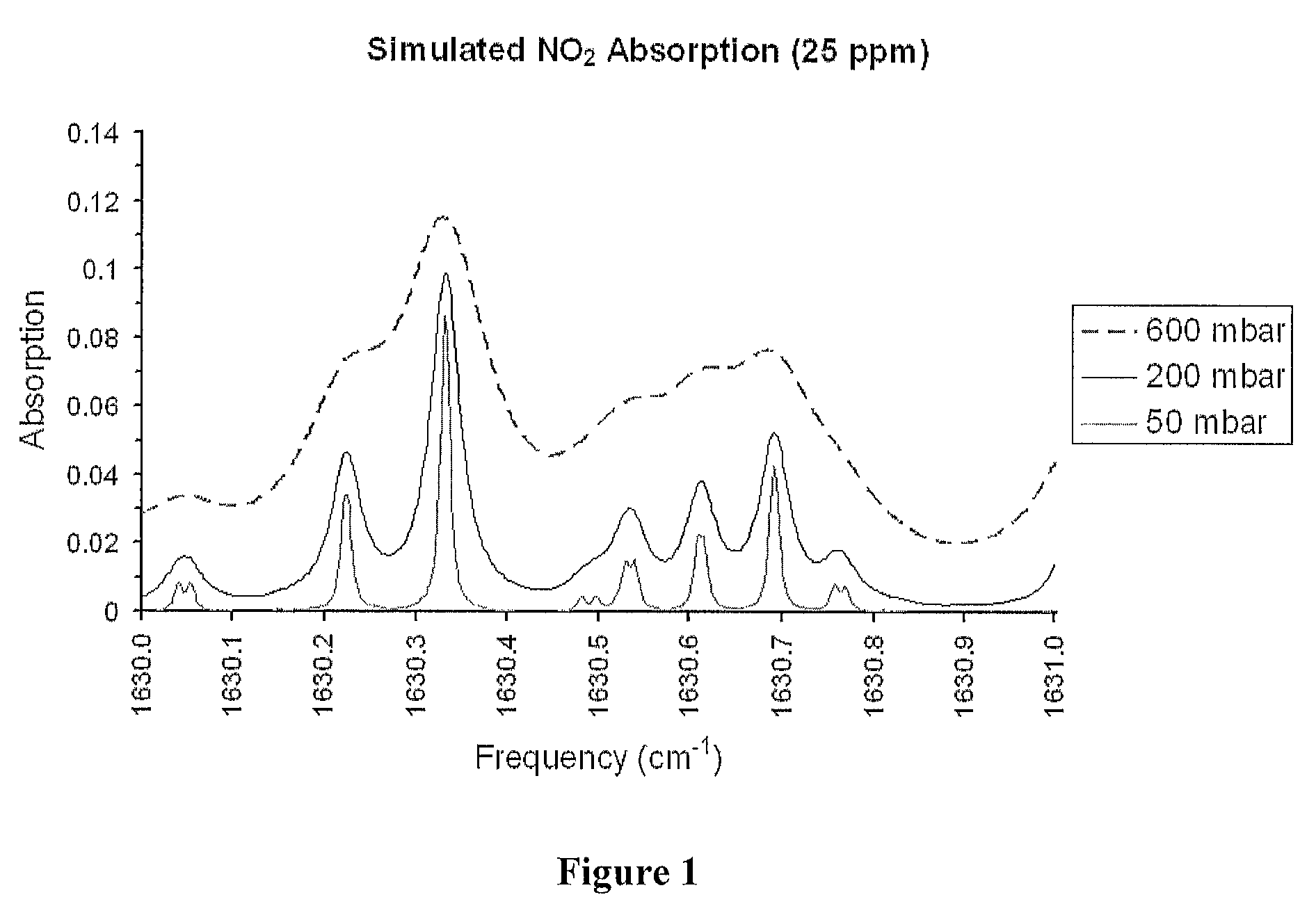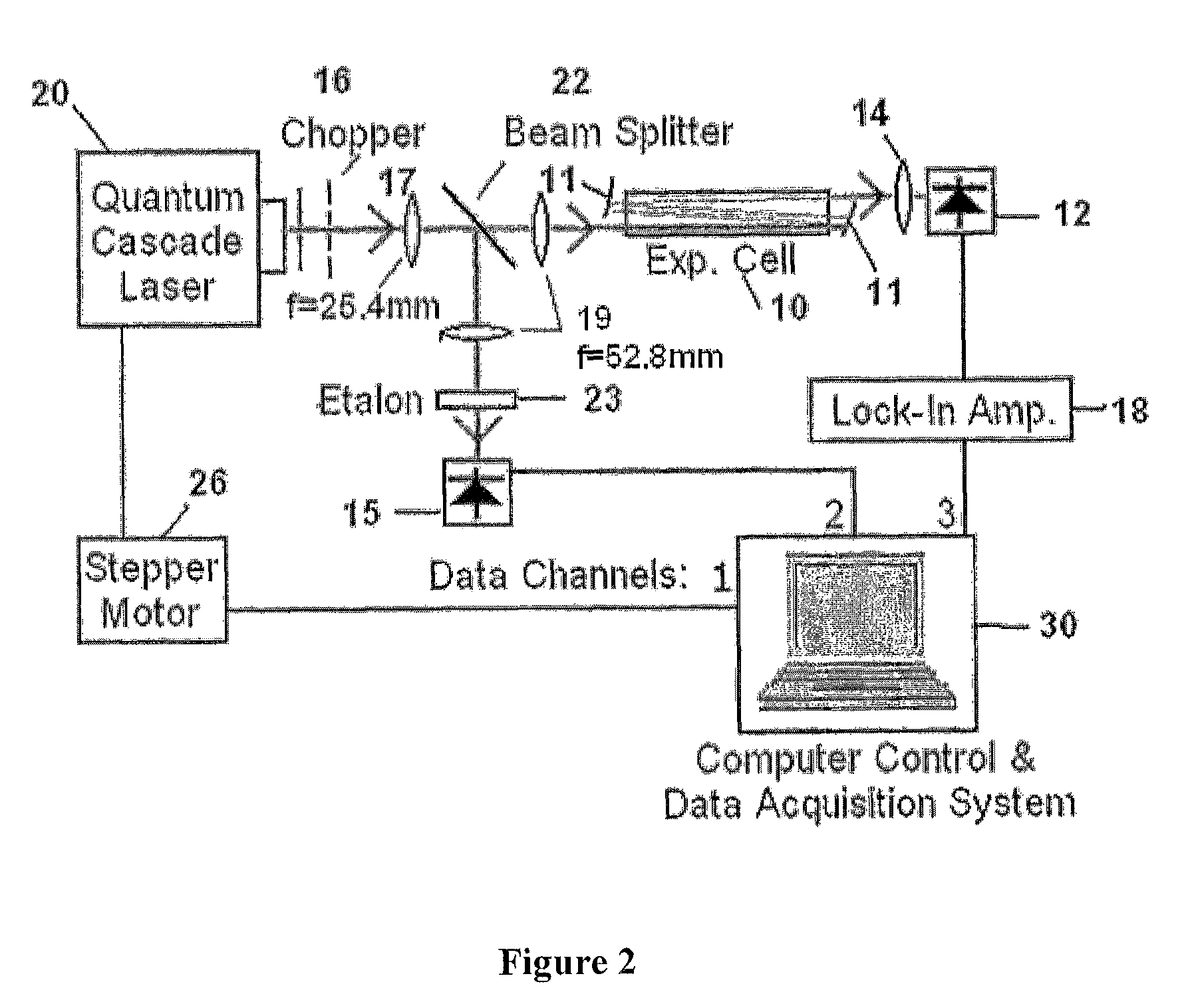Method and apparatus for the detection of trace gas species using multiple line integrated absorption spectroscopy
a technology of integrated absorption spectroscopy and detection method, which is applied in the direction of instruments, measurement devices, color/spectral property measurements, etc., can solve the problems of (2) not being practicable, and achieve the effect of boosting the magnitude of the recorded signal, enhancing the sensitivity of detection, and effective averaging of nois
- Summary
- Abstract
- Description
- Claims
- Application Information
AI Technical Summary
Benefits of technology
Problems solved by technology
Method used
Image
Examples
Embodiment Construction
[0020]Absorption spectroscopy of NO2 is carried out using a short-path (12.5 cm) absorption cell 10 filled with different concentrations of NO2 (25 ppm, 5 ppm, 2.5 ppm, 1 ppm, 0.5 ppm and 0.25 ppm). The cell 10 may be a single pass absorption cell, a simple multipass cell, a multipass absorption cell (e.g., Herriott cell, astigmatic cell); cavity ringdown spectroscopy cell; Off-axis integrated cavity output spectroscopy cell and the variants there off.
[0021]The schematic of the arrangement of apparatus used for absorption spectroscopy of NO2 is shown in FIG. 2. FIG. 2 shows a Quantum Cascade laser 20 whose continuous output is chopped into laser pulses by a mechanical chopper 16 running at 3.9 kHz. The laser pulses pass through a first lens 17 of a beam expander and are then incident on a beam splitter 22. One part of the beam is reflected downwardly in the drawing to the second lens 19 of the beam expander. The other part of the beam travels through the beam splitter and enters cel...
PUM
| Property | Measurement | Unit |
|---|---|---|
| time | aaaaa | aaaaa |
| pressures | aaaaa | aaaaa |
| pressures | aaaaa | aaaaa |
Abstract
Description
Claims
Application Information
 Login to View More
Login to View More - R&D
- Intellectual Property
- Life Sciences
- Materials
- Tech Scout
- Unparalleled Data Quality
- Higher Quality Content
- 60% Fewer Hallucinations
Browse by: Latest US Patents, China's latest patents, Technical Efficacy Thesaurus, Application Domain, Technology Topic, Popular Technical Reports.
© 2025 PatSnap. All rights reserved.Legal|Privacy policy|Modern Slavery Act Transparency Statement|Sitemap|About US| Contact US: help@patsnap.com



